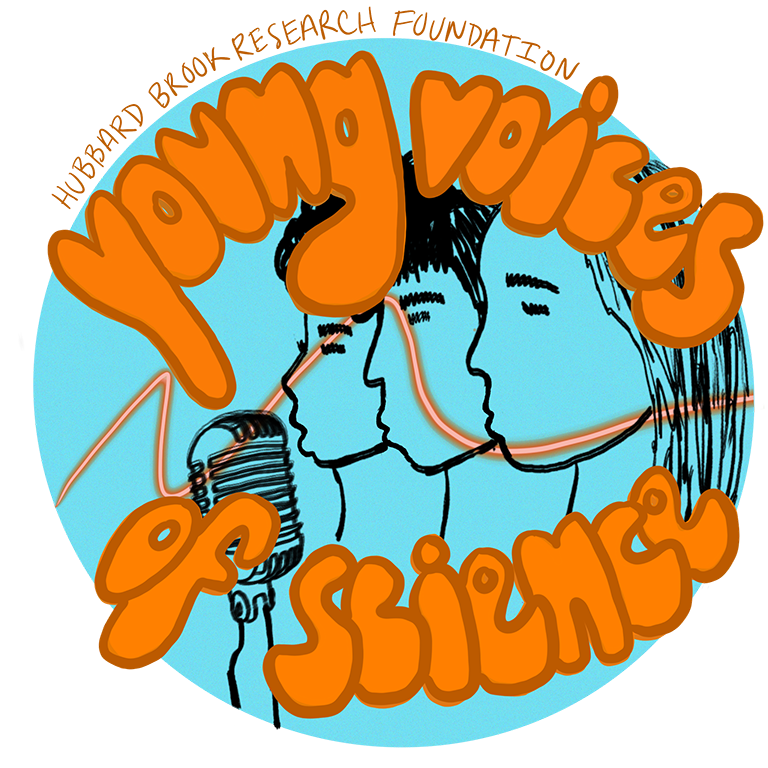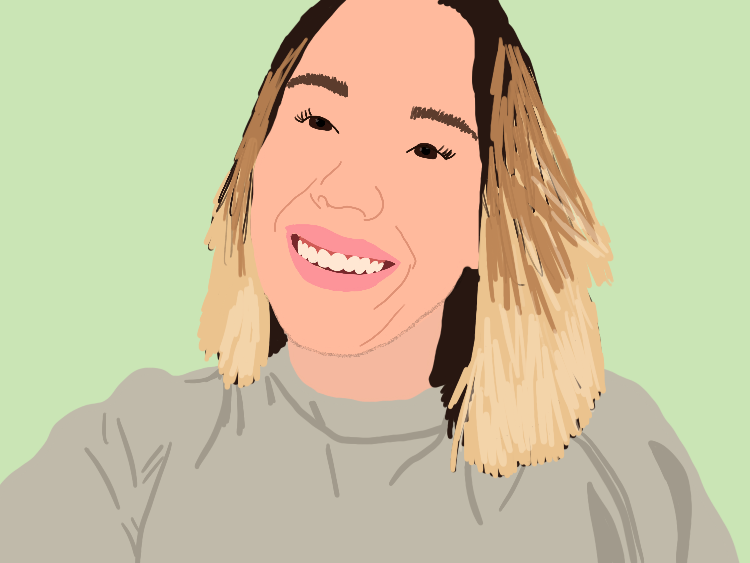
Sarah Cuprewich (she/her) is a PhD student studying community ecology and fungal dispersal ecology at Dartmouth College. Sarah is also a second-year Joint Science Education Project (JSEP) graduate fellow. Through her participation in the JSEP program,she had the opportunity to engage in public outreach at Kangerlussuaq Airport, the most active international airport in Greenland. The goal of this outreach was to share local science done by American, Danish, and Greenlandic students with an international crowd. While in Greenland, Sarah was able to conduct fieldwork in addition to her outreach work, learning first hand the most effective methods of communicating science with a general audience.
For her outreach project, Sarah built on her experience in Greenland by writing an op-ed titled “Finding Greenland”. In this paper, Sarah shares her experience in this amazing location, how the world always makes bold and mostly baseless assumptions about Greenland, and shares information about the people and culture found on the world’s largest island. Sarah also dives into the historical, economic and scientific value of Greenland and how, in the face of climate change, the island and region are rapidly changing. Read Sarah’s full piece below!
Finding Greenland by Sarah Cuperwich
The flight was droningly loud, frigid, and windowless. Once landed, I was relieved to climb out of our plane, a decades-old LC-130, and look up at the bright, cloudless sky. I had just arrived in Greenland the way most U.S. National Science Foundation (NSF) funded scientists do: a direct Air National Guard cargo flight from a base in Scotia, New York to Kangerlussuaq, Greenland.
I traveled to Greenland in the summer of 2023 as part of the Joint Science Education Project (JSEP), a NSF-funded collaboration between researchers, teachers, and students in the U.S., Denmark, and Greenland to educate and do research with the next generation of polar scientists. I was a graduate fellow tasked with developing a module to teach to students in the field, which felt daunting since I had never been to Greenland before and I felt awkward teaching about a place I myself had never experienced.
Many people, however, do not feel that same awkwardness and have previously spoken with authority about Greenland without ever stepping foot on the island. From Donald Trump’s 2019 political gaffe offering to “buy” the autonomous territory to famed Canadian-American Arctic explorer Vilhjalmur Stefansson publishing a book on Greenland years before visiting, it is clear that both historical and modern Western hubris have unfairly influenced our perspective of Greenland.
Politics aside, the question at the forefront of my mind was: why is Greenland so different than I imagined? And upon my return home, why was I repeatedly fielding basic questions from smart people? Why does it seem like Americans do not truly know what, where, and who Greenland is? Why are there so many misconceptions about the world’s largest island?
Greenland is an autonomous territory part of the Kingdom of Denmark located on the North American plate in the north Atlantic, nestled between Canada and Europe. Maps generally become more distorted near the poles due to Earth’s spherical shape, so Greenland’s true extent is misconstrued to most without an intimate knowledge of geography. It’s often a surprise to learn that Greenland is in fact the world’s largest island (Antarctica and Australia are disqualified because they are technically continents, not islands) – a vastness that becomes immediately apparent when you’re there.
The location of Greenland has been prized by Americans since before the second World War. In fact, the settlement with the largest international airport and research base camp, Kangerlussuaq, was used as a U.S. military base until 1992 – although the Air National Guard still operates there today. As geopolitical tensions lessened in the mid-1990s with the fall of the Soviet Union, most of Kangerlussuaq was transformed into a tourist launchpad and scientific stronghold due to its proximity to the Greenland Ice Sheet and the presence of Greenland’s longest road (39 km). Given this context, then, it was no surprise that we, along with the other Arctic researchers in Kangerlussuaq, lodged in converted military barracks; the scar of past militarization is impossible to miss.
Beyond the physical geography of the land, the population of Greenland hovers around 56,000 and nearly 90% of the population identifies as Inuit. Greenland is unique in that the vast majority of people (~50,000) speak their native Greenlandic in addition to their colonizer’s tongue of Danish. When you factor in the global prevalence of English, you quickly realize that most folks there are bi- or tri-lingual. While the population is relatively small, the cultural significance of maintaining the Greenlandic language is mighty. Some Greenlandic words you may recognize, like kayak and anorak, have traveled around the globe. The strength of their native language has surely contributed to keeping the local, traditionally Inuit cultures alive (in a modernized fashion, of course) in the face of colonization and subsequent neoliberal globalization.
Greenland’s increasing autonomy under Denmark has some claiming that it’s not a matter of if but when Greenland will become a sovereign nation. With the achievement of self-rule in 2009, Greenland has finally regained control over its policing, judicial system, and natural resources. Greenland’s domain over their own natural resources has become increasingly important after geological probes discovered reserves of technologically-important minerals like nickel, platinum, copper, and cobalt. The potential for international development and other involvement in Greenland is bolstered by the fact that the Arctic Sea will largely be navigable by large ships in the coming summer months due to decreasing sea ice cover. This will open routes for trade and recreation between Europe and Asia that were previously inaccessible, and possibly connect Greenland to the world economy like never before. The delicate balance between development to fund nation-building and protection of at-risk, and often sacred, ecosystems has only just begun in Greenland.
Greenland’s location is also vitally important for another type of enterprise: scientific research. With the recent discovery that the Arctic is warming up to four times faster than the rest of the world, the region is now poised to be at the forefront of climate change research. Greenland is a unique place where geologists, oceanographers, and biologists work alongside physicists, climatologists, and snow and ice scientists to answer a myriad of questions. Groups are drilling the entire depth of the Greenland Ice Sheet (2 miles!) to study past climate conditions and glacier-making processes. Others are studying the rocks for evidence of past glaciation to better understand the extent of ice retreat in the Arctic. And some have long-term exclusion plots to study the impact of caribou and musk oxen on local vegetation dynamics.
These questions are important in the context of Greenland, but will also be largely applicable to the rest of the world. Due to the accelerated warming of the Arctic, research coming out of the region will largely serve as a warning for what to expect in the rest of the world. There is an even more direct link between what happens in Greenland and the globe: the Atlantic meridional overturning circulation is slowing down and may cease to be functional by 2050. This ocean current that starts off the coast of Greenland helps regulate global climate via ocean salinity and temperature gradients. But with the predicted large influx of fresh water from the thawing Greenland Ice Sheet, this necessary current will slow down, causing catastrophic and potentially irreversible changes to the global climate. As government officials have been claiming for years, “what happens in the Arctic does not stay in the Arctic”.
As I packed up my belongings and research samples, said my goodbyes to the brilliant JSEP students and teachers, and took one last look at the landscape, I was struck by how much I would miss Greenland. After reading about and researching the place for months before I first landed, I now fully understood that the best teacher is the land itself. If you’re one of the billions of people who will never visit Greenland or the Arctic, I encourage you to seek out authentic narratives from the people who intimately know and love their home instead of relying on preconceived notions. I’ve simply laid out the facts; I am ill-equipped to help you understand these facts in their proper context. And while my several week stay understandably did not transform me into an expert in all things Greenland, nor should it have, it reinforced my belief that open-mindedness can truly be world expanding. I feel that I am now able to at least see the real Greenland beyond the geopolitical strategery and cultural ignorance of the “Southern”, or non-Arctic, world. And for that I am endlessly thankful.






